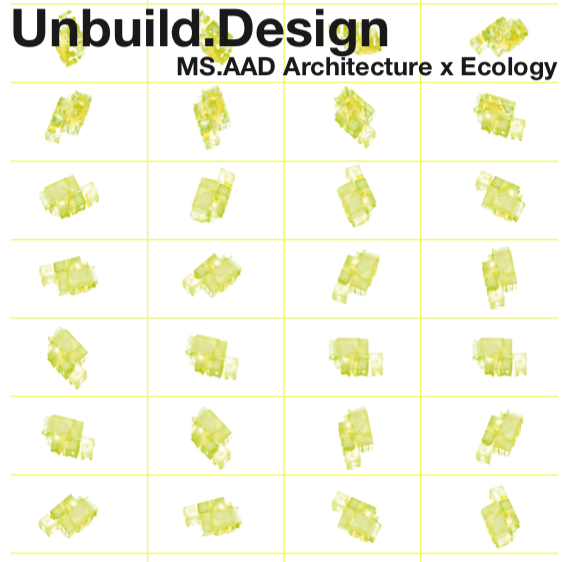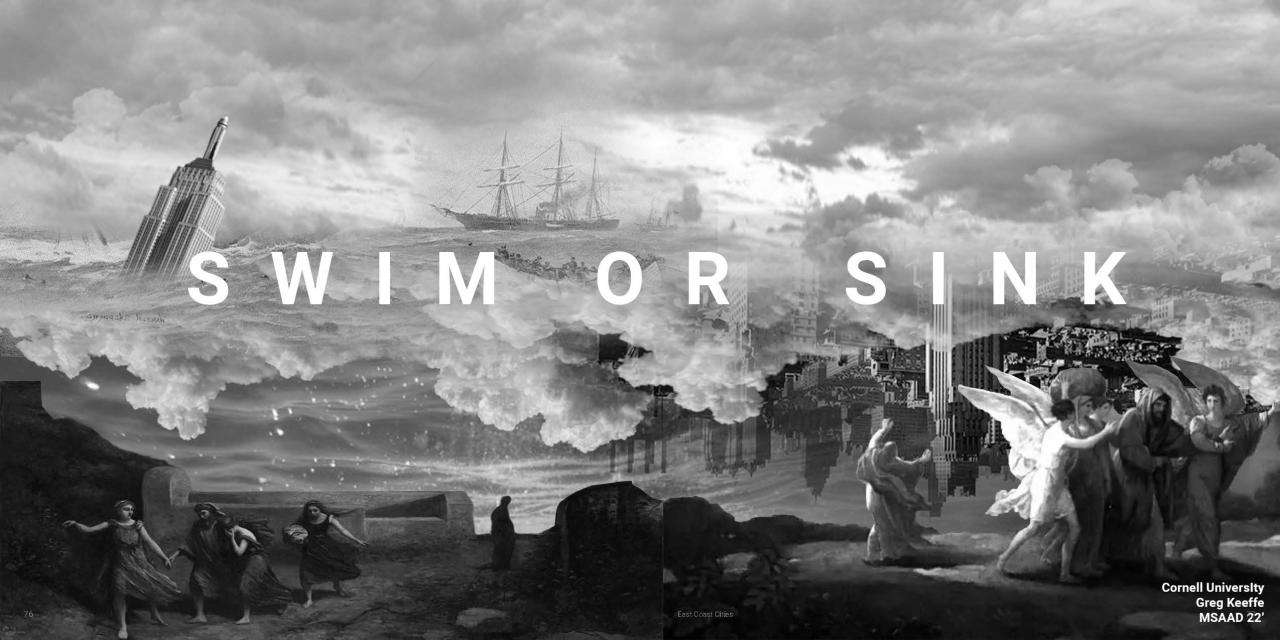ARCH7111: DESIGN A STUDIO MODULES
The Design A studio is unique, intensive, and fast-paced research studio consisting of (3) 2.5 week studio modules modeled after the territories of investigation. The studio is highly curated in conjunction with ARCH6301 and ARCH6110 to establish a broad foundation for incoming post-professional students to explore the proposed specializations and opportunities for interdisciplinary study in a short time.

2021 Fall Studio Module Series
Teaching Associate: Leanna Humphrey
UNBUILD.DESIGN
Architecture + Ecology
Instructor: Felix Heisel
This design studio module is taught in collaboration with Dan Bergsagel (Schlaich Bergermann Partner, NYC), and is part of the Engaged Cornell Research Project CI:RCLE – Circular Ithaca: Researching Construction in the Local Economy, in collaboration with Mark Milstein (SC Johnson College of Business) and community partners Finger Lakes Reuse, Ithaca NHS, Cornell Cooperate Extension of Tompkins County, Trade Design Build, and Taitem Engineering. It is further inviting and supporting the conversation with Ithaca-based New York State Task Force CR0WD – Circularity, Reuse and Zero Waste Development and its New York City counterparts in formation.
This design studio asks the question how systemic concepts or methods for the direct reuse of building elements and components at scale can be developed and implemented – utilizing Ithaca, New York as both urban mine and site for its implementation. Beginning with selected building typologies as a material source, students will be tasked to design a series of spatial follies that address the above global question through the development of both systemic design for disassembly and site-specific architectural applications. Through the investigation, the studio aims to promote a new design paradigm that begins from material availability and specificity, and foresees future material and component reuse within industrialized re-construction.

That Sinking Feeling: Climate Adaptation and mitigation along the East Coast of the United States
Architecture + Urbanism
Instructor: Greg Keeffe
America’s east coast is dissolving into the Atlantic due to delayed effects from the last ice age. This sinking is being exacerbated by global warming, which is raising sea-level by an alarming and increasing rate. Gradual sea level rise isn’t the only issue – there is also increased storminess due to planetary heating which is leading to storms with incredible surges associated with them. This is some of the most densely populated land in the US: something has to give. If we are to continue to live by the sea – our cities and their architecture will have to adapt – and quickly… by the end of the century, sea levels will be more than a metre higher than now – and storm surges due to hurricanes could add another 10 metres to that.
Climate Adaptation is one of the most difficult challenges of not only this century but also beyond. Climate change will not stop suddenly: it is likely that it will continue for 500 years at least. This long term impact challenges us as designers to think beyond a singular intervention, but understand a series or process of continual adaptations.
‘Mutability is the epitaph of worlds. Change alone is changeless. People drop out of the history of a life as of a land, though their work or their influence remains.’
G Linnaeus Banks. The Manchester Man 1876.

Anthroposcenic Flux
Architecture + Discourse
Instructor: Jeremy Foster
You are asked to design a single or distributed architectural-landscape intervention, an “environmental observatorium”: an OBJECT as well as a DEVICE whose primary purpose is to index, register and/or anticipate -- render legible -- ongoing environmental change, and to do this ATMOSPHERICALLY. At a fundamental (ie planetary) level, the atmosphere is what (meteorologically) makes life on earth possible. From a human-subjective point of view, though, it is a profoundly hybrid construction, incorporating the ‘meteorological’ and the ‘physiological’ in equal measure, and as we shall see, the ‘affective’ as well. A focus on atmosphere recognizes that human environments are not just built but also grown, but continually shaped by ambient climatic conditions, their constructed as well as their naturally-occurring components assailed by the same routine meteorological actions. These diffuse ‘climatic effects’ indexthe environment’s topographical and material configuration, and reveal that both ‘materiality’ and ‘use’ are place-based but not placebound. By highlighting what goes on in the environment rather than the physical environment per se, and indexing how human intentionality and nonhuman agency become articulated, these ‘climatic effects’ also reminds us how local human-environment exchanges are shaped by seemingly non-local materialities and technologies, as well as networks of practice and knowledge. At the same time, because they are tied to how things unfold and are achieved, these environmental effects also TEMPORALLY give rise to affects. Understood as forms of pre-reflective emotional intensity and the rising and falling of “lived power or the potential to act”, AFFECT is a matter of agential relationality that emerges through practical embodiments and interactions between and with objects and environments that, being felt as much as seen, is innately “atmospheric”. Scoring the (corporeal, more-than representational) fluxes of atmospheric experience means bracketing conventional architectural conceptions of space as a psycho-experiential construct, and focusing on the heterogeneous performances, interactions and affects generated and awakened by the project.


